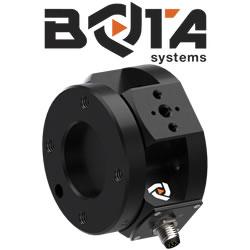Service Academies Innovation Challenge Showcases Practical, Potentially Transformative Technologies
U.S. Air Force Academy team wins new competition designed to encourage students at U.S. military academies to develop groundbreaking solutions to challenges facing the U.S. armed forces
DARPA works to ensure the technological superiority of U.S. military forces, and the agency continually seeks new sources of talent to accomplish that goal. The nation's three military Service academies are a promising source of that talent. These institutions immerse the next generation of military leaders in a unique environment that blends academic excellence and deep understanding of current and future military needs. To better cultivate the great potential of these young officers-to-be and encourage their career-long collaboration with DARPA, the agency last week hosted the first DARPA Service Academies Innovation Challenge.
Nine teams-three each from the U.S. Air Force Academy, U.S. Military Academy and U.S. Naval Academy-squared off in a competition at DARPA's offices in Arlington, Va. Cadets and Midshipmen showed projects designed to develop practical, potentially transformative technologies that could address a wide variety of challenges facing the U.S. military. At the end of the day, an Air Force Academy team emerged as the overall winner, earning a trophy and bragging rights.
"The Cadets and Midshipmen truly impressed us in terms of developing brilliant new concepts and innovative prototypes that could create positive impact for the military," said Daniel Ragsdale, DARPA program manager. "The projects spanned the technology spectrum-from software and robotics to avionics and materials science-and showed the interdisciplinary, solution-focused thinking DARPA is always looking for."
"Everyone was impressed with the amount of thought put into all the projects-and this is the real DARPA trademark-in not a lot of time," said Dan Kaufman, director of DARPA's Information Innovation Office (I2O), which oversaw the event.
Preparations started last October, when the academies created more than 30 teams, each with a project designed to address an issue that team members chose. The academies picked the nine teams with the strongest projects for the final competition that took place April 29.
A panel of DARPA program managers and DARPA Service liaison officers judged each project, with most weight toward whether the project addressed current or anticipated future Defense Department (DoD) challenges over the short, middle or long term. The judges also evaluated whether each project's approach or results were significantly novel and technically feasible, and could create disruptive or transformative capabilities and/or provide significant improvement over existing approaches or technologies.
The winning project, Distributed Propulsion System, presented an approach to aircraft thrust augmentation intended to save billions in fuel costs across the Air Force. The Air Force team's prototype engine design redirects excess air through a plane's wings, creating more forward thrust with less fuel and noise than traditional aircraft engines.
Two projects earned honorable mentions. An Army team submitted a flexible method to create structural materials that could also serve as power sources, which could save weight. A Navy team demonstrated the feasibility utilizing Unix-based servers on a small satellite as a responsive, low-cost solution to provide Internet service to remote locations.
Attendees voted for a Crowd Favorite as well. The winner was an Army project called the Heavy Lifters, a fully operational prototype inflatable bladder system capable of lifting up to 22.5 tons and operating in restrictive environments.
The winning projects reflected the wide range of maturity among all the competing entries. The Army honorable mention was an initial proof of concept, the Air Force winner and Army Crowd Favorite were developmental prototypes, and the Navy honorable mention is scheduled for initial deployment via a March 2015 space launch.
"In all the projects we saw, the Cadets and Midshipmen struck upon innovative, practical ideas that are consistent with DARPA's approach to developing groundbreaking solutions to challenging problems," Ragsdale said. "Based on the success of today's event, we are eager to reach out to industry and academia to build upon the momentum we've achieved."
The Service Academies Innovation Challenge was the second event in DARPA's new two-pronged Service Academies Competition Pilot initiative. The first was the Service Academies Cyber Stakes, a competition that took place at Carnegie Mellon University January 30-February 2, 2014.
Whereas the Innovation Challenge welcomed projects of the students' choosing, the Cyber Stakes had a more specific focus: help the Defense Department achieve its goal to have 6,000 cybersecurity experts integrated into combat commands by 2016. Meeting that goal requires building a pipeline for training and education, particularly for the future officers who will be responsible for overseeing protection of the cyber domain.
For four months before the Cyber Stakes took place, more than 100 Cadets and Midshipmen from all three academies honed their skills under the tutelage of world-class cybersecurity experts. All the preparation led to the event itself: a decathlon-style computer security competition that pitted the three best teams from each school head to head over three days. Individuals and teams from all three academies took home 18 gold, silver and bronze medals in six different events.
Featured Product

